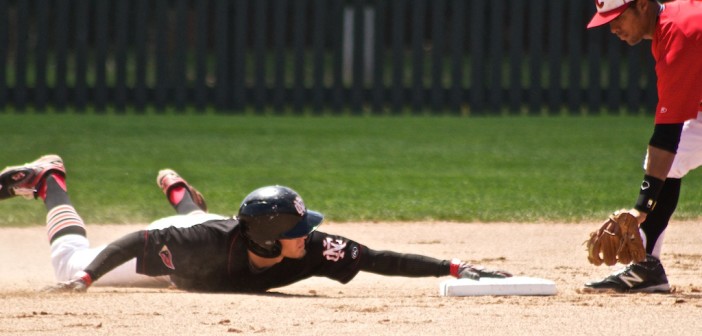Being a Division-III college, North Central’s athletic budget is limited. When compared to that of a Division-I school, the financial gap is significant.
Last year, the budget for North Central’s athletic programs totaled approximately $3.8 million. At the conclusion of this year’s 2014-2015 athletic season, the budget is estimated to increase marginally to around $3.9 million.
“It’s about five percent of the school’s total budget,” said Paul Loscheider, vice president for business affairs. “It consists of coaches and administrative staff salaries and benefits, team travel, uniforms, supplies, athletic training and insurance, among other things. The specific amount in any budget of the College is always determined by need and what the Cabinet and Budget Committee feel is a priority.”
Initially, each sport is provided an operating budget by the College. If a sport has both men’s and women’s teams, they each have their own separate budgets. However, there are additional ways to extend past those original numbers.
“Every coach also has the ability to organize fund-raising efforts to add to those budgets for special projects to make a better experience for the student-athletes,” said James Miller, director of athletics.
Over the past decade, Miller feels that the college has done an excellent job improving and adding to athletic budgets, facilities, and coaching staffing.
“The obvious ones are the addition of the Res/Rec Center, B-W Stadium, new tennis courts and the baseball field. There’s also been dramatic improvements in Merner Field House,” he said. “The facility additions and improvements have allowed us to recruit better student-athletes. Our coaching staff is robust and the budgets are improving yearly. The one facility we would like to change is the swimming pool, but that’s expensive and complicated.”
This is the difference between Division-III schools and those at the Division-I level. Opportunities and resources are much more flexible for Division-I programs, primarily due to increased revenues that allow for higher expenses. For example, the University of Oregon’s athletic budget last year was $93 million. This year, it’s estimated to exceed $98.4 million.
“The biggest difference is that D-I gives athletic scholarships, which D-III cannot,” said Loscheider. “Another difference is the source of funding. At D-I, it’s usually gate receipts, concessions, TV revenues, sales of clothes with their logo and major donations from former athletes, many of whom had big professional sports contracts.”
Loscheider continued to explain the drastic discrepancies between financial gains within different collegiate divisions.
“In a typical year for a major D-1 university, that could be in the $50 million to $70 million range,” he said. “Gate receipts for D-III schools amount to maybe $40,000 to $60,000 per year. There are donations from former athletes, few of which ever had big professional contracts. The bulk of funding for D-III schools come from the general revenues of the institution.”
As a result, the sheer passion and dedication exhibited by Division-III athletes is worth noticing.
“Division-III is truly the last level that has student-athletes who only play sports for the love of them and aren’t compensated in any fashion based on athletic ability,” said Miller. “Games are played exactly the same, but things like budgets, resources, staffing, donors and even expectations are night and day.”
Regardless of the challenges Division-III colleges and their athletes continue to face, Miller acknowledges that North Central’s future for sports is bright.
“It’s extremely promising. Athletics play an important role at our school,” he said. “NCC is a tuition-driven school, and we need the students, but they add so much more to the atmosphere and feeling across campus. We’re always looking for ways to improve their overall experience. I don’t see that going anywhere but up.”

